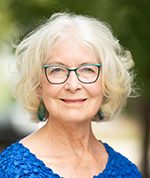
Correction: In the June 20 edition of Boulderganic magazine, the article “Straight to the Point”
incorrectly stated that physical therapist Jan Dommerholt was involved
with a court case in 2009 in Oregon. The story incorrectly suggested
that dry needling cannot be practiced by physical therapists in Oregon.
Dommerholt was also incorrectly quoted as saying that a study he
conducted shows that .04 percent of dry needling patients suffer any
kind of injury. Dommerholt’s study showed that the risk of a significant
adverse event is .04 percent when dry needling is performed by
practitioners in Ireland who completed Dommerholt’s dry needling course.
The needle slowly goes deeper and deeper through the layers of skin and into the muscle and the pain diminishes while the dull, warming vibration begins deep inside — in the spot no one could get to before. The technique at hand, dry needling, uses needles primarily to treat muscle pain. Dry needling was designed to deactivate trigger points, which are areas of injury and dysfunction. More than 200,000 physical therapists, chiropractors and physicians across the country use dry needling. The method treats neck, back and knee pain, tendonitis, overuse injuries, hamstring strains, headaches and a variety of other musculoskeletal and neurological injuries.
“We see people all the way from geriatrics to teenage athletes to semi-pro and professional athletes, and I find this tool works equally well across the whole spectrum,” says Sue Nakaoka, a physical therapist at Boulder Center for Sports Medicine.
Professional cyclist Jesse Goodrich has received both acupuncture and dry needling for his back issues in the past, and he says dry needling has done more for his rehabilitation than acupuncture did.
“The first few times [dry needling] is a little shocking because it’s different than acupuncture because [physical therapists] go for the muscle trigger point,” Goodrich says. “Acupuncture … is more of a relaxation technique, but dry needling is more of a solution to a specific injury.”
The technique dates to a study on trigger point pain patterns done in the 1940s, but only started gaining in popularity in the United States in 2005. As the technique has seen an increase in practitioners and patients, it has also seen increased political opposition from acupuncturists, who claim that dry needling is acupuncture with a different name. Dry needling practitioners argue that it’s a skill set that augments other therapies as people work toward a more holistic approach to healthcare.
Dry needling mixes acupuncture and modern medicine, says Dr. Yun-tao Ma, a North Boulder resident, the founder of and teacher at the American Dry Needling Institute and author of several books on dry needling and acupuncture. His students are already trained medical professionals who know anatomy, physiology and neuroscience.
“Physical therapists come to this course and they’ve had four or five years of medical training,” Ma says. “This course is based off of their medical training. No one can learn acupuncture in 56 hours.”
But Valerie Hobbs, the campus director of the Southwest Acupuncture College in Boulder, says that what Ma teaches is acupuncture with a new name.
“We look at this as a very prescriptive kind of dumbed-down acupuncture, in a way,” she says.
Acupuncturists and acupuncture associations also say there is a potential public health hazard due to many more medical professionals performing needling on patients.
In a statement released by the American Association of Acupuncture and Oriental Medicine in March, the group took the position that dry needing and “any other method by which a needle is inserted to effect therapeutic change is, by definition, the practice of acupuncture.”
Some acupuncturists say that dry needling takes away patients while failing to meet the educational standards acupuncture is held to. To become a licensed acupuncturist takes at least 3,000 hours of course work, while dry needling is taught in weekend-long courses — although to already licensed medical professionals with medical training.
“There is a kinesthetic skill that comes with going into tissue and knowing what you’re doing and that takes more than a weekend to learn,” Hobbs says. “Physical therapists will say that, in the new health care paradigm, scopes are going to overlap and no one owns a single technique, and we agree that’s probably true. But when you start to overlap that scope, your overlap has to be based on demand and education and we don’t see those things with the physical therapy profession.”
Ma says that he respects the field of acupuncture and acupuncturists tremendously, but that acupuncturists need to make changes for their patient’s sake.
“If [acupuncturists] want to serve their patients better and improve their business quality, they have to learn new things and understand modern medicine,” he says.
“It’s not a new procedure. It’s an ‘emperor has no clothes’ kind of argument,” Hobbs says. “Here is the suit of the finest silk, but in the end, it’s just acupuncture.”
Dr. Jan Dommerholt, an expert at trigger point dry needling, states in his book Trigger Point Dry Needling: An Evidence and Clinical-Based Approach that dry needling and its techniques are not in the exclusive scope of acupuncture or any medical discipline.
“It is physical therapy when performed by a physical therapist, chiropractic when performed by a chiropractor, and dentistry when performed by a dentist,” he writes.
The issue has become a heated political debate in several states across the country, including Colorado, where more lenient laws allow dry needling to be practiced by other medical professionals with proper certification.
In 2009, Dommerholt was involved with a court case in Oregon against the Oregon Association of Acupuncture and Oriental Medicine. He defined the technique of dry needling in support of legalization for physical therapists, but the case concluded that dry needling is acupuncture and that it is not safe for physical therapists to use dry needling on the public.
The case ultimately made it illegal for physical therapists and chiropractors in Oregon to puncture the skin of their patients. Dommerholt said he was disappointed with his opposition’s arguments to ban dry needling.
“[Acupuncturist’s] arguments don’t make any sense and they are distortions that are historically incorrect, there are a lot of assumptions that aren’t supported by anything and everything defeats itself,” Dommerholt says. “The public health hazard is a powerful tool when you want to go up and talk to state boards, senators and congressmen, but our study has shown that there is no such health concern because 0.04 percent of patients suffer any kind of injury from dry needling.”
There are risks that come with dry needling, the biggest risk being the accidental puncture of a lung (a pneumothorax). It is a rare complication with dry needling, and every patient is usually required to fill out a consent form before the procedure that alerts them to potential complications.
Ma says that this political battle is not about medical risks, it’s about money. No matter what legislation gets passed, acupuncture still needs to reform itself to more modern times in order to survive, he says.
A report from the July 2012 edition of Acupuncture Today revealed that 91 percent of all acupuncture businesses fail within 10 years. Hobbs says that it’s not a turf war or a matter of protecting the profession, but it’s a matter of protecting the public from “bad acupuncture.”
“This fight is only in the United States,” Ma says. “We can see that it is not a medical issue, it’s a social issue. … Frankly speaking, if [acupuncturists] do not change, they’re going to lose their business.”
Dry needling was based on the drive to learn new things, Ma says, and that drive is necessary for both acupuncture and dry needling need to continue to improve for the sake of patients.
Respond: [email protected]














